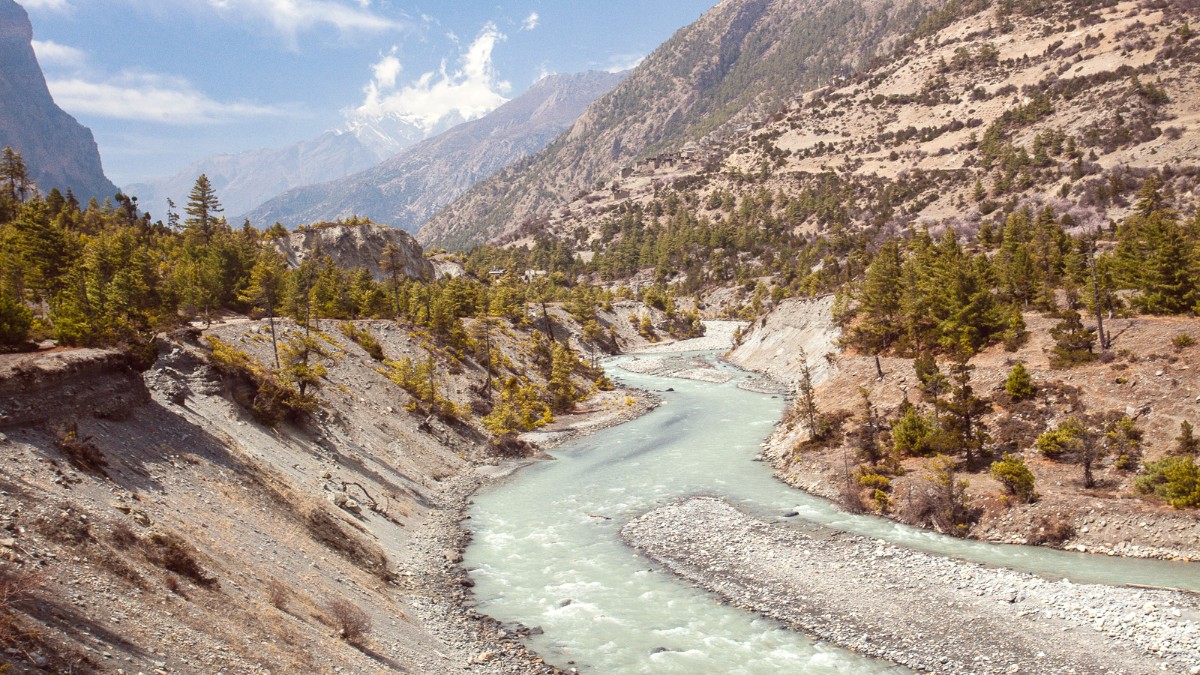
Nepal
Wear lightweight synthetic or merino wool long-sleeve shirts and bottoms directly against your skin. These materials wick sweat away, keeping you dry and warm. Avoid cotton, as it retains moisture and chills when wet. This layer provides warmth. A Fleece jacket or a lightweight down or synthetic puffy jacket is ideal.
Nepal is a generally conservative country. Dressing modestly shows respect for local customs, especially when interacting with villagers or visiting religious sites. Avoid overly revealing clothing. Keep shoulders and knees covered. This applies to both men and women. On Trek: Choose items that offer coverage. Long pants or trekking trousers are generally preferred over shorts, especially for women. When entering monasteries or temples, remove your shoes. Dress respectfully, ensuring your shoulders and knees are covered.
Waterproof, ankle-supporting, and well broken-in hiking boots are a necessity. Look for boots with GORE-TEX or similar waterproofing. Do not bring new boots; break them in extensively before your trip to avoid blisters.
Pack lightweight sandals or Crocs for evenings at tea houses. These allow your feet to breathe and rest after a day in hiking boots.
Bring multiple pairs of moisture-wicking hiking socks made from wool or synthetic materials. Include a few pairs of warm, thick socks for evenings and colder trekking days. Avoid cotton socks, which can cause blisters and retain moisture.
Keep your documents organized, secure, and accessible. Having both physical and digital copies is a smart strategy.
Nepal uses 230V, 50Hz. Plug Types: Type C (two round pins), Type D (three large round pins), and Type M (three large round pins, similar to South Africa) are common. A Universal travel adapter is ideal for compatibility. Portable chargers and power banks are a necessity for charging your devices in tea houses where power outlets may be limited, cost money to use, or be unreliable. Example: Anker PowerCore 20000 Portable Charger.
A Smartphone or compact camera is sufficient for most trekkers. If you are serious about photography, consider a sturdy, weather-sealed DSLR/Mirrorless camera and a Wide-angle lens for landscapes. Protect your equipment from dust and moisture. Cold weather drains batteries quickly; carry multiple spare batteries. Bring enough memory cards for thousands of photos.
For secure internet access, consider NordVPN or ExpressVPN, both offering consumer VPN services useful for travelers.
B&H Photo serves as a comprehensive retailer for camera and other electronics equipment.
Airalo offers global eSIMs, a convenient option for maintaining connectivity abroad without physical SIM cards.
Assemble a comprehensive first aid kit tailored for trekking in a remote environment.
Carry enough of all your prescription medications for the entire trip, plus extra in case of delays. Keep them in their original packaging with the pharmacy label. Bring a doctor's prescription or a letter explaining your medical conditions.
If carrying your own gear (no porter): A 50-70 liter trekking backpack is appropriate. Look for comfortable suspension and good organization.
A Sleeping bag is a necessity for warmth. Choose a sleeping bag rated for 0°F to 20°F (-18°C to -7°C), depending on the season and your personal cold tolerance.
Trekking poles are highly recommended for stability, reducing strain on your knees during descents, and aiding on tricky terrain, especially after the pass.
Comfort items like a Neck pillow or Eye mask are useful for long, bumpy bus rides. Security items like a Small padlock for your duffel or tea house room. A money belt or neck wallet Money belt keeps passport and cash hidden. An RFID-blocking wallet adds security for credit cards.
High-quality outdoor gear, specific prescription medications, specific brands of toiletries, and warm sleeping bags suitable for extreme cold are best purchased before arriving in Nepal. Local trekking shops sell gear, but quality can vary.
Carry reusable items to lessen environmental footprint.
Utilize filters or tablets instead of plastic bottles.
Use power banks to limit reliance on tea house electricity.
Hire local guides/porters and buy goods from local shops.
Pack light but smart. Every extra pound feels heavier at altitude. Strive to carry only what you truly need for the trek.
Organization with dry sacks is a great choice to keep items secure and dry.